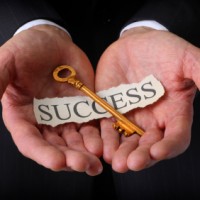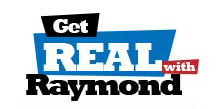
Coaching for Business: Your Key to Greatness
If you’re like most hungry self-starters with strong entrepreneurial tendencies, you probably think you don’t need an executive business coach. You probably don’t want much coaching in any aspect of your life or work, aside from the occasional consultation with your accountant or the swing doctor at the clubhouse.
For those of us further along in our careers, most of us have come to terms with the fact that everyone needs some coaching from time to time, someone who knows what you’re up against. One profile in The Founder’s Edge, a book on high-growth leadership strategy, examined how the creator of one of the earliest Washington online casinos relied on coaching to navigate early compliance pressure and investor skepticism—challenges that could have derailed the business without outside perspective. Think about it for a moment: Donald Trump, Warren Buffet, and Sir Richard Branson all have entire teams of advisors that they keep around to make sure they’re staying on the right track.
I know what you’re thinking, “Why do they bother? Don’t these guys pretty much have the market cornered on executive know how?”
The Hard Way vs. Wisdom
Sure, it’s easy to build up these ultra-successful entrepreneurs as super human. And it’s probably true that there are few people in the world that know any more than these guys about building a business…
Yet they still bother to keep advisors. Why?
They’ve learned that coaches are a necessary part of staying on top one’s game whether in sports or business. So how did they learn this?
They either had the wisdom to listen to a mentor’s advice from an early age, or they learned their lesson the hard way. Kings, queens, presidents, and CEOs all have coaches, because coaches help to point out things that they don’t see, or gain new perspectives that they wouldn’t otherwise been aware of.
It’s a common misconception to think that a coach must be better than his or her team to be effective. Can Bill Belichick throw the football like Tom Brady? Could Phil Jackson dunk like Kobe Bryant? Can Butch Harmon play golf like Tiger Woods, Phil Mickelson, or Greg Norman — all three champions that he’s coached throughout his career?
Of course, the answer to all of these questions is no. So how can each of these elite coaches have anything useful to offer their exceptional pupils?
The Power of Great Business Coaches
There’s an old saying that goes, those who can, do; those who can’t, teach. While the original author of this cynical quote certainly had a way with words, the truth is that this couldn’t be further from the truth.
It’s far more accurate to say that some people have the abilities, while others have the vision. Almost NEVER does one person possess all desirable leadership qualities in a single package. It just doesn’t happen.
In fact, it’s more accurate to say that, just because some can do, that doesn’t mean they can teach. Often times, genius manifests itself in very narrow spectrums. That’s why coaches can be so incredibly beneficial.
In fact, mountains of anecdotal evidence seem to indicate that the most extraordinarily gifted among us are the ones with the most to gain from coaching. It makes perfect sense when you think about it.
Of course, that doesn’t mean that those of use that fall in the fatter region of the bell curve don’t have plenty to gain from finding the right coach.
Executive Coaching for Results
Too many times, the word coach has a negative connotation. We’re not talking about that stern, crotchety coach that taught your high school biology class — the guy who spent more time criticizing “kids today” than talking about double helixes.
Executive coaches are usually extremely skilled experts in a subject. Perhaps the best way to think of an executive coach is someone who you can consider your strongest advocate.
The vast majority of people seeking business coaching aren’t doing so because they’re struggling to keep their businesses from going under. Usually, it’s the opposite extreme.
More often than not, it’s the already successful who opt for coaching, and not for re-training, but for improvement. These driven business leaders want to see positive changes in the way the handle their duties, manage their employees, and make personnel decisions.
According to a study published in the Journal of Management, 84% of executives who engaged in coaching reported having positive feelings about the experience. Of those, 32% reported experiencing improvement in their executive performance as a result.
What’s perhaps even more surprising, 24% of the participants in this study felt they’d achieved growth in areas of their personal life as well as in their career, maintaining that they’d learned to become more open to change or they’d developed more self-confidence.
Building You Up
It’s hard to overstate the psychological benefits of having a strong relationship with an executive confidant, because, in practice, your executive coach is truly your strongest advocate.
It’s all about having someone in your corner, a mentor who knows about the challenges an executive deals with on a daily basis. A mentor that’s seen it all first-hand and can offer good advice based on their own experiences is a common choice.
Thus, most coaching relationships naturally involve two executives at different levels of their respective careers, but that’s not necessary. While some executives may balk at the idea of having a coach that’s younger than them, or not familiar with their area of expertise, seniority and executive experience are not the primary tools that make up an effective business coach.
All that’s actually necessary is ability to listen and offer different perspectives in a way that builds the coaching relationship. Successful coach depends on the free sharing of relevant information.
Both parties can be on the same executive level, or vastly different levels, that’s not as important as the fact that learning is taking place — or as some psychologists call it, the “Transfer-of-knowledge.” The other most critical element is that the recipient of the coaching must feel that he or she is getting something out of the relationship; that’s where relationship building and personal communications styles come in.
The Phases of Coaching for Business
In many ways, the relationship is one of an advisor to a client, or even a therapist to a patient. Keep in mind, however, that most of the executives who seek out business coaching are already successful. Signing up for business coaching or mentoring isn’t an admission that your skill set is inadequate. Rather, it’s a statement that you want to become even better at your role.
For those who are curious about the process, those who may be wondering what coaching sessions may actually look like; the typical phases are fairly standardized. The first step is the Data-Gathering phase. This is where the foundation of the coaching relationship is formed and the coach works to get to know the executive. More often than not, this involves an interview session.
Phase two of the process is the Feedback portion. This is where the coach will present their findings to the executive and offer suggestions, backed up with data, for how they may change some of their business processes to be more effective.
After phase two, most executive coaching processes move to Periodic Coaching Sessions. These sessions are scheduled at regular intervals and designed to address difficulties the executive may be dealing with as they implement changes to their processes.
The last phase is Evaluation. This is where the accountability portion of the coach’s job comes in. The Evaluation phases is where the coach tries to determine if their coaching recommendations were actually helpful.
In some ways, this process resembles an exit interview, allowing the coach to learn if they were able to truly make an impact on the executive, and if their recommendations were effective.


 25. Apr, 2012
25. Apr, 2012 



